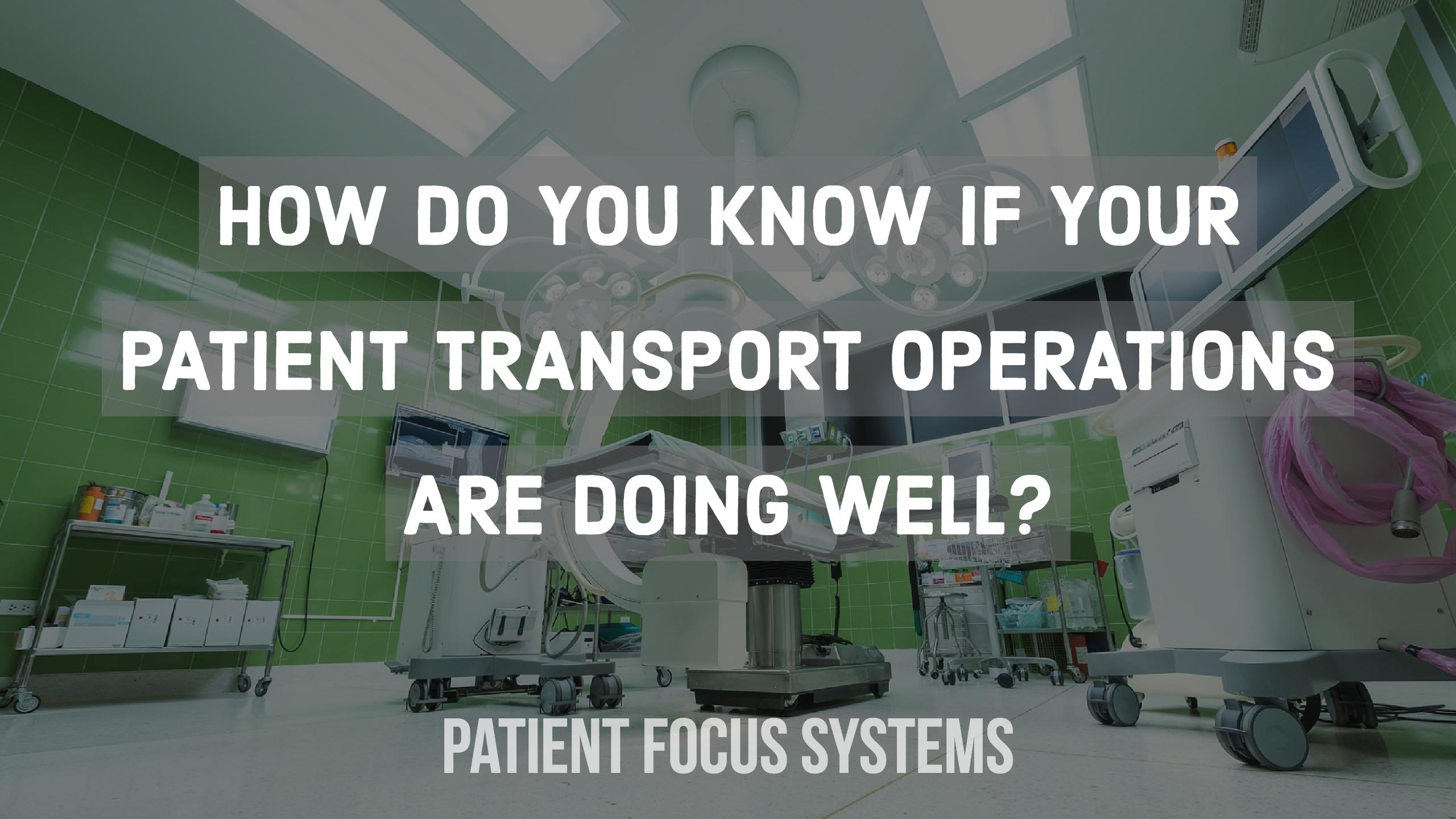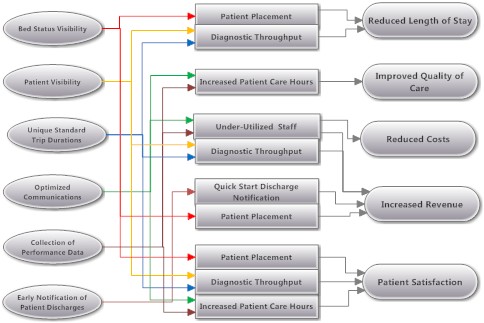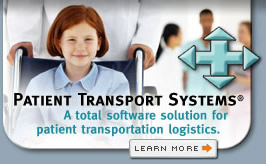 Introduction: In the ever-evolving landscape of healthcare, efficiency and patient care remain top priorities. One crucial aspect often overlooked is patient transportation within medical facilities. Traditional methods of coordinating patient transfers can be time-consuming and prone to errors. Enter Patient transportation software – a solution that's transforming the way healthcare institutions manage patient mobility. In this blog, we'll explore the best use of patient transportation software and how it can enhance hospital operations while prioritizing patient well-being.
Introduction: In the ever-evolving landscape of healthcare, efficiency and patient care remain top priorities. One crucial aspect often overlooked is patient transportation within medical facilities. Traditional methods of coordinating patient transfers can be time-consuming and prone to errors. Enter Patient transportation software – a solution that's transforming the way healthcare institutions manage patient mobility. In this blog, we'll explore the best use of patient transportation software and how it can enhance hospital operations while prioritizing patient well-being.
Patient Flow Software Blog
Streamlining Patient Transportation: Leveraging the Power of Software for Optimal Efficiency
Posted by Mary Cooper on Tue, Sep 12, 2023 @ 10:57 AM
Topics: patient transportation software
HOW DO YOU KNOW IF YOUR PATIENT TRANSPORT OPERATIONS ARE DOING WELL? Part 2
Posted by Ron Gregg on Tue, Sep 18, 2018 @ 02:51 PM
PART 2 – THE POWER OF BENCHMARKING
In Part 1, we stated that the best thing patient transport technology can do is to demonstrate that your transport operations are performing as well as can be expected. However, sometimes the numbers show unexpected, but important, results. Here is an example.
Transport managers are interested in comparing their actual performance against some reasonable performance standard, what ARE we doing compared to what SHOULD we be doing?
Read MoreTopics: patient transportation software, patient flow software, patient tracking, Patient transport software
HOW DO YOU KNOW IF YOUR PATIENT TRANSPORT OPERATIONS ARE DOING WELL?
Posted by Ron Gregg on Fri, Oct 20, 2017 @ 06:40 PM
One easy way to know if your patient transportation operations are functioning correctly is if you are not receiving any complaints from the customers. However, zero complaints may never have happened in any hospital anywhere.
Read MoreTopics: patient transportation software, patient flow software, patient tracking, Patient transport software
How to Track & Decrease the Transport Timeframe
Have you ever wondered, “what is my staff actually doing up on the nursing units while they are supposed to be picking up a patient for transport?” Have you questioned, “why do my transporters have to wait so long for a nurse or nursing staff member to prepare the patient for transport, or why are we always having to wait for lift assistance? If you’ve asked yourself any of these questions and wondered how you could possibly track this process and the intermediate timeframes without actually shadowing the transporters, then you’ve come to the right place.
We’ll be discussing these common questions and answering one that you may not even have thought to ask: How can I decrease the transport timeframe at my hospital?
The challenges are that you only have so many transporters and the demand for them during certain hours can really put the strain on everyone: the transporters, the Diagnostic & Nursing staff, the patients, and you as the manager (note: even if you aren’t in a managerial role, this article is a good read for anyone involved with the time-consuming transport process).
Topics: patient flow, patient transportation, patient transportation software, patient transport
Managing | Patient Flow | from the Emergency Department
Posted by Ron Gregg on Thu, Apr 30, 2015 @ 01:55 PM
A recent study of hospital CEOs¹ showed that financial challenges remain their biggest concern. Much of the concern relates to continuing systemic changes resulting from healthcare reform.
The financial benefits derived by the significant increase in insurance coverage of previously uninsured patients is potentially offset by reduced government payment levels under Medicare and Medicaid, pressures to move toward a value-based care model, and collection issues resulting from high deductible insurance plans.
These changing currents emphasize the essential need for hospitals to continually improve the efficiency of their operations. One increasingly important area of operations is the emergency department because of its growing role as the primary entry portal for inpatient treatment, the main source of revenue for most hospitals.
A RAND Corporation study² found that the combined effects of steady growth of ED visits and fewer inpatient beds have caused:
Topics: patient transportation software, patient flow software, patient satisfaction, bed management, patient placement
Bringing Passion and Problem Solving to Patient Flow Logistics
Posted by Mary Cooper on Fri, Aug 30, 2013 @ 04:18 PM
A PFS original interview with Peter Van de Kerkhove, one of the industry’s leading innovators
Peter Van de Kerkhove is a man with a mission. A mission to provide hospitals with astandardized approach for coordinating and managing Patient Transport activities, using technology.
In fact, he’s had this mission for over 25 years, beginning with his job as a Project Manager for Process Improvement, working for a 900-bed medical center, in the Department of Operations (workflow) Analysis. It was in this position that Peter discovered he had a passion for Patient Transport and made it his personal mission to see it improved.
Today, he is seeing that mission realized as over 50 hospitals have benefited from his innovative breakthrough in transport technology, including those served by PFS, as he is one of our co-founders and a continued consultant.
Topics: patient flow, patient transportation, patient transportation software, patient tracking, patient visibility
Patient Flow Technology for Medium Sized Hospitals
Posted by Ron Gregg on Fri, Jul 19, 2013 @ 06:08 PM
Saving You Money & Time, So You Can Save Lives
Patient care is largely about getting people into the hospital to receive treatment and initiate their recovery process so they can continue healing after discharge. Unfortunately, individualized patient work flows are often interrupted, which has the potential to delay treatments, lower clinical staff efficiencies and extend the length of stay. This is costly to hospitals since labor and space are the top two most expensive resources of a hospital’s budget.
But hospitals equipped with technology used for tracking and optimizing patient and equipment transport, as well as managing housekeeping duties that impact bed availability, have the opportunity to reduce a patient’s length of stay, improve the quality of care, reduce the average cost per procedure, increase bed utilization, and improve patient satisfaction. What could this look like for a medium sized hospital? How about a $34,500 savings for every 50 occupied beds? So, for a hospital that has a census of 150 transportable patients*, we are looking at $100,000 annual savings in clinical labor. Continue reading if you’re interested in why getting from Point A to Point B can be so expensive and how Patient Flow Technology helps that journey run much more smoothly (and cheaply).
Topics: patient flow, patient transportation, patient transportation software, patient flow software, bed management, patient placement, patient tracking
The Necessity of Patient Transport Management Systems
Posted by Ron Gregg on Wed, Jan 30, 2013 @ 10:29 AM
Bringing the Whole Picture Into Focus
One of the current hot topics in literature about improving hospital care and finances is the introduction of comprehensive real-time patient information that can be shared among diagnostic, clinical and support personnel. This information allows hospital personnel to optimize their impact and it is catching the attention of hospital managers. It turns out there are different and complimentary technological approaches to a solution. Let's see how they work.Enterprise patient visibility systems integrate and centralize essential information with at-a-glance accessibility for the entire patient care team. These systems collect information about admissions, discharges and transfers, orders and results of tests, bed statuses, and patient location information from other systems. This helps clinical, diagnostic and support staff to determine how to prioritize their tasks, and to improve patient experience and outcomes. These systems help create measurable improvements in observation times, bed turnover response, patient satisfaction and volumes.
Patient tracking information can be supplied by Real-Time Location Systems using a combination of tags and wireless networks to identify a patient's current location in real-time. Unfortunately, they require an infrastructure that many hospitals cannot afford. A more cost-effective solution comes in the form of an automated Patient Transport Management System, which can offer even better patient logistics information in addition to support for the management of patient transportation. That’s what we like to call a “win-win.”
Topics: patient flow, patient transportation, patient transportation software, patient tracking
How to Avoid Patient Transportation Issues Before They Occur
Posted by Mary Cooper on Fri, Jun 22, 2012 @ 12:30 PM
A True Life Look at Patient Flow Challenges
When the transporter arrived to take Jo Anne’s mother down to X-Ray, she hardly expected him to bring a stretcher, deposit it in front of the elderly woman’s bed and request that she get out of bed and onto the stretcher by herself. There are reasons some patients wear “fall risk” precautionary wristbands and if Jo Anne had not been there to assist her mom onto the stretcher, that precaution could have become a reality.
Unfortunately, this was just the beginning of Jo Anne’s troubles with the patient transport process. When Jo Anne’s mother was brought back to her room on a stretcher, the 2 transporters proceeded to park it outside of her door and she was given the instructions to go ahead and “get back to bed.” Frustrated, Jo Anne asked an administrator, who was making PR rounds, if she could speak with someone from the transport department, but no one ever showed up. Now, anyone even slightly familiar with hospital protocol or the basics of patient transportation will realize that this is not ideal, or even acceptable, transporter behavior.
Topics: patient flow, patient transportation, patient transportation software, patient flow software

.jpg)


.png)




